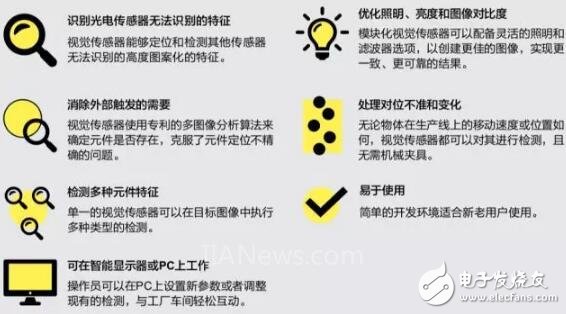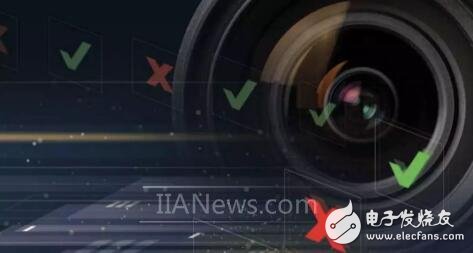The vision sensor is a machine vision system that is specifically designed to perform simple presence/absence detection in unstructured environments and provide pass/fail results. Vision sensors combine the image acquisition capabilities of the camera with the processing power of the computer to make decisions about the position, quality, and integrity of the manufactured component or product.
Vision sensor advantages
Vision sensors can quickly provide pass/fail, yes/no, and presence/absence results, solving automated detection challenges in a different way than Other types of sensors.

What kind of visual sensor is best for your own factory floor?
For manufacturers, the development environment, lighting, and modularity are some of the important features that need to be considered when choosing a vision sensor.
1, standard setting environment
First of all, this vision sensor should be easy to use. Even novice users can easily set up, configure and install it. When selecting a vision sensor, manufacturers need to consider not only the current testing needs, but also future applications (where it may be necessary to have a better and more flexible vision system). At the same time, rapid processing of reliable communication links with other automation equipment in the factory is also a crucial factor.
2. Integrated light source
For some visual sensors that rely on uniform diffuse illumination to position the components and use brightness, contrast, and pixel count tools to perform reliable inspections, if they are placed in a factory environment and confined space with inadequate lighting conditions, even if there is integration Light sources, it may also bring some obstacles to the production process. At this point, choosing a vision sensor with a built-in light source will save external lighting and fixing fixture costs.
3, flexible modular design
For some manufacturers, it may be difficult to install the vision sensor in the exact location to achieve the best field of view, imaging resolution, and component lighting. However, if the visual sensor itself is compact, it can be installed in any space. If it also has a flexible modular design, it will help the optical path and cable laying, allowing users to replace the light source, optical components and lens in the field, to ensure the rapid completion of production line conversion or application modification is no longer a dream! The best is If it is also equipped with a set of auto-focus lens, it will eliminate the need for manual re-focus or adjust the installation height, greatly improving the production efficiency!
As a global leader in machine vision, Cognex always offers visual sensors that meet your needs, regardless of your production environment, resource constraints and specific tool requirements.

By combining fully proven Cognex In-Sight vision tools, simple setup and flexible modular design, Cognex vision sensors are able to adapt to line speed requirements of up to 6,000 components per minute for visual The value, ease of use, and flexibility of sensors set new industry standards. Among them, the compact size of the In-Sight 2000 series of vision sensors provides both in-line and right-angle mounting configurations that can be installed in tight spaces.
Field-replaceable integrated optics and light sources can also be adjusted to meet changing application requirements, eliminating the need for costly external light sources. At the same time, In-Sight 2000 vision sensors can use In-Sight Explorer software, the world's most widely used development environment, to configure and maintain a variety of machine vision applications. The EasyBuilder user interface configured on the In-Sight Explorer software also provides fast, step-by-step application setup, enabling novice users to achieve extremely reliable detection performance in virtually any production environment!
Motorola Mobile Radio,Motorola Walkie Talkie Phone,Motorola Vhf Mobile Radio,Motorola P25 Mobile Radio
Guangzhou Etmy Technology Co., Ltd. , https://www.gzdigitaltalkie.com